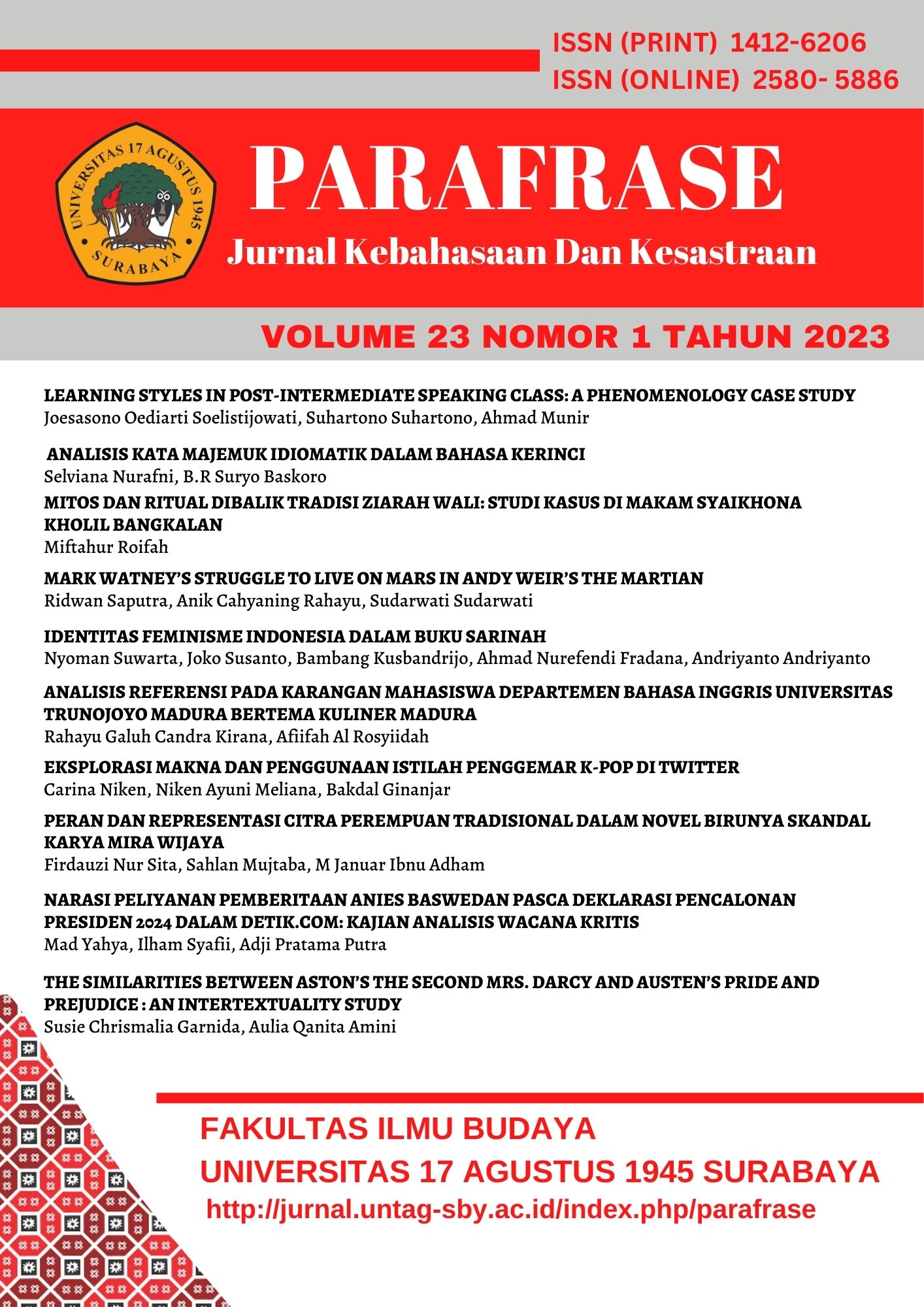THE SIMILARITIES BETWEEN ASTON’S THE SECOND MRS. DARCY AND AUSTEN’S PRIDE AND PREJUDICE
AN INTERTEXTUALITY STUDY
DOI:
https://doi.org/10.30996/parafrase.v23i1.9239Keywords:
Critical Discourse Analysis, interpretation, intertextualityAbstract
In reading texts, whether literary works or non-literary works, the readers may find similarity between one text and other texts. This similarity creates a connection which is called intertextuality. Fairclough (1989) stated that intertextuality is a part of interpretation of a text based on Critical Discourse Analysis. There are three stages of Critical Discourse Analysis: description, interpretation, and explanation. This article is about an intertextuality between Elizabeth Aston’s The Second Mrs. Darcy and Jane Austen’s Pride and Prejudice. The focus of this study is to find and classify the similarity between two novels, interpret and explain the intertextual similarities between them. The findings show that there are 4 intertextual features which can be found in the data; introductory sentence, characters, settings, and plots. These show that Elizabeth Aston’s The Second Mrs. Darcy has several similarities which connect to Jane Austen’s Pride and Prejudice. The possible motifs of Elizabeth Aston in building intertextuality links between her The Second Mrs. Darcy and Jane Austen’s Pride and Prejudice are (1) to create continuity of Jane Austen’s Pride and Prejudice, (2) to show her expertise in writing is as great as Jane Austen, (3) to create or re-write the existing idea by developing different or new focus
Downloads
Downloads
Published
How to Cite
Issue
Section
License
Authors publishing in the Journal will be asked to sign a Copyright Assignment Form. In signing the form, it is assumed that authors have obtained permission to use any copyrighted or previously published material. All authors must read and agree to the conditions outlined in the form, and must sign the form or agree that the corresponding author can sign on their behalf. Articles cannot be published until a signed form has been received.It is a condition of publication that authors assign copyright or license the publication rights in their articles, including abstracts, to email jurnalparafrase@untag-sby.ac.id. . This enables us to ensure full copyright protection and to disseminate the article, and of course the Journal to the widest possible readership in print and electronic formats as appropriate.



















